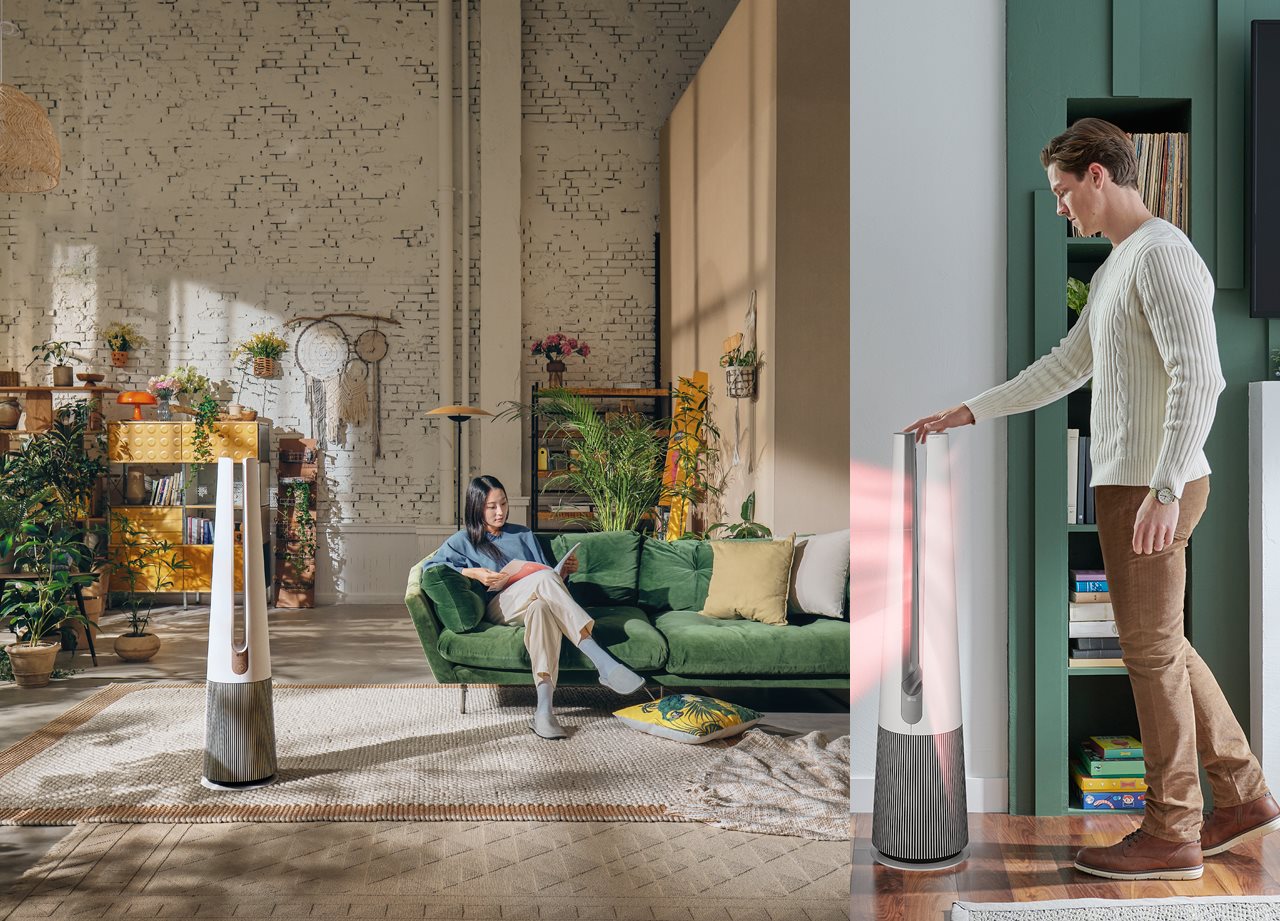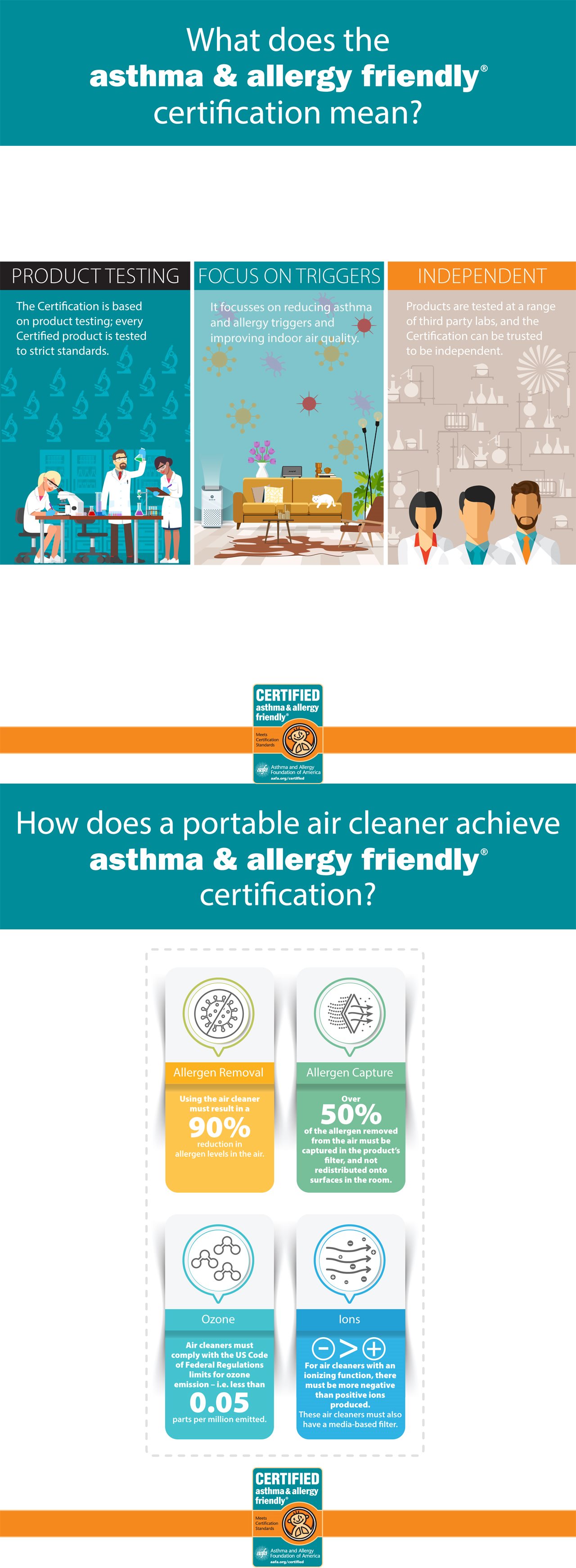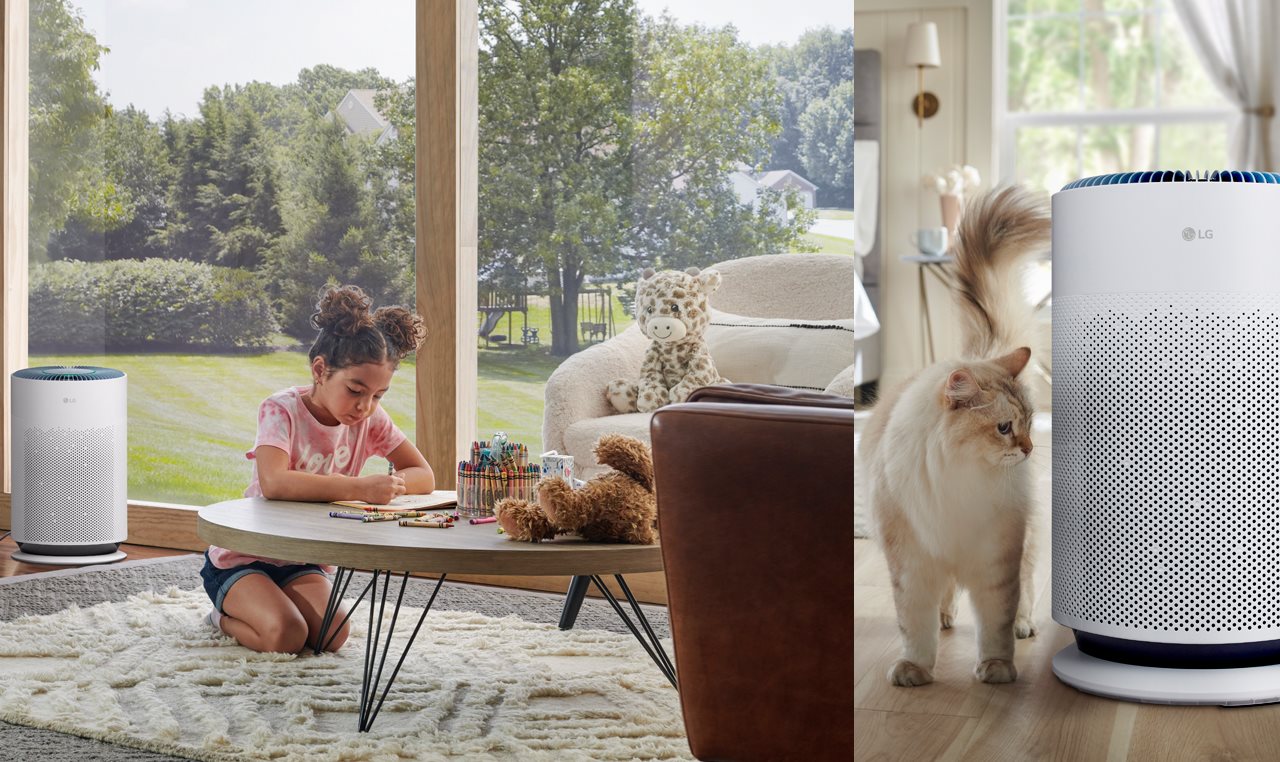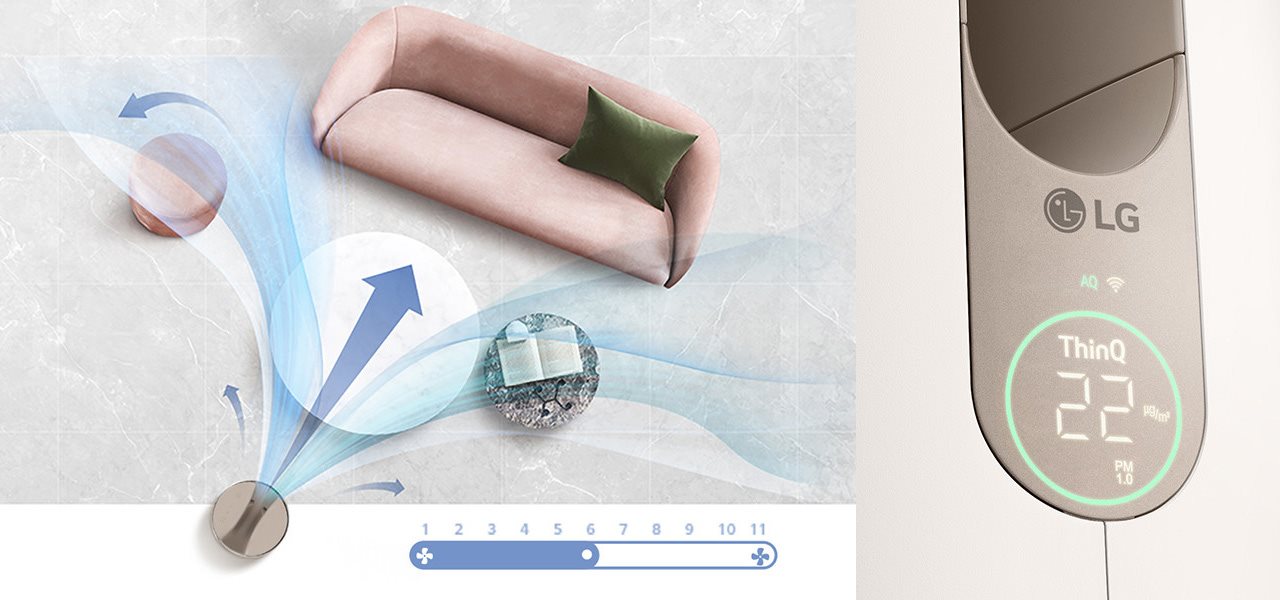How indoor air quality can make your home healthier
Posted: October 24, 2024 | Word Count: 865

Did you know Americans spend about 90% of their time indoors? According to the Environmental Protection Agency (EPA), this means you may have almost constant exposure to a variety of indoor air pollutants that could impact your health, potentially leading to worsening allergies or asthma, irritation of the eyes, nose and throat, headaches, dizziness, fatigue, respiratory diseases and more.

"About 25% to 30% of the population experiences seasonal allergies," said Samuel Hodgkinson, senior product manager, LG Air Care, "and air quality definitely affects those people. But poor indoor air quality can impact anyone in your home, especially children, older adults and those with certain preexisting conditions."

In honor of Indoor Air Quality Awareness Month, take time to learn about air pollutants in your home, and ways to improve your indoor environment to benefit everyone's health.
"About 25% to 30% of the population has seasonal allergies," said Samuel Hodgkinson, senior product manager, LG Air Care, "and air quality definitely affects those people. But poor indoor air quality can impact anyone, especially children, older adults and those with certain preexisting conditions."
To start making your indoor air healthier, here are a few tips.
1. Cleaning makes a difference
Many indoor air contaminants are difficult to entirely eliminate, especially dust, dust mites, pet dander (if you have pets) and pollen that enters your home from outdoors. However, good cleaning practices can help. Clean floors frequently using a vacuum with a good-quality HEPA filter and damp mop hard floors. Avoid clutter where possible as it can make it hard to clean and dust effectively.
Wash bedding in hot water if possible, or at least dry bedding in your clothes dryer fifteen minutes or longer. Hanging linens outdoors is not recommended, as you will just bring pollens indoors.
2. Reduce sources of indoor pollution
Safeguard against mold, chemical emissions or other potentially dangerous substances by having your home tested by a professional. Providing your home with detectors for smoke, carbon monoxide and radon is also recommended.
Humidity levels also impact the quality of indoor air. For example, too much humidity can lead to mold growth and mildew. Using dehumidifiers or humidifiers as needed can improve your comfort and the quality of your indoor air.
You may also want to avoid using wood-burning fireplaces or stoves, and candles, especially if anyone in your home is vulnerable to respiratory illnesses.
3. Ventilate when possible
While a few HVAC systems can draw fresh air in mechanically from the outside as part of their systems, most simply recycle air that's already present in your home — which means pollutants or allergens are not being removed. They might be filtered to some degree, but that depends on the quality of your HVAC filtration system, the filters you use and how frequently you replace them.
Simply opening windows can provide ventilation, which is a good idea when you're painting or using cleaning products that could be harmful to your health, but depending on the outside conditions, that could also mean letting more pollutants, pollens and other contaminants into your home from the outdoors.

"Using a high-quality indoor air filter is one of the best investments you can make for your family's well-being," said Hodgkinson. "This is even more important during the colder months, when everyone spends more time indoors."

4. Purify your air
One of the most effective ways to reduce indoor air pollutants is by using a high-quality air purifier in your home. For example, new LG Air Care products use a Superb Filtration System, which is an Advanced NanoFiber True HEPA filter that captures 99.97% of fine dust and allergens to deliver purer, cleaner air than any single-filter solution.

The LG PuriCare™ AeroTower™ + Heat (U10CS1H) and the LG Aero PuriCare™ Tower Lite (U10CS1C) are both CERTIFIED Asthma & Allergy Friendly® by the Asthma and Allergy Foundation of America. They also have a PM (particulate matter) 1.0 Sensor and Smart LED Indicator to provide visual status of indoor air quality, along with simple, intuitive controls on top of the tower that let you easily adjust the settings. Even better, they offer whisper-quiet sound levels as low as 23 decibels in Sleep Mode, and their sleek, streamlined design complements both modern and traditional decor. The main difference between them is that the AeroTower™ and Heat lets you set it to your desired temperature, so you can stay warm on chilly days with its Heating Mode.

The LG 360 Lite (AS601HBBO) offers a 360° Filtration System with NanoFiber True HEPA Filter, providing coverage for rooms up to 2059 square feet @ 1 ACH (air changes per hour) or up to 429 square feet @ 4.8 ACH. Its compact design and light body makes it easy to move, while also taking up less space.

With all three air purifiers, you can control the device, check air quality and view filter life on the LG ThinQ® App, right from your phone.

"Using a high-quality indoor air filter is one of the best investments you can make for your family's well-being," said Hodgkinson. "This is even more important during the colder months, when everyone spends more time indoors."
Learn more about solutions to help improve your home's indoor air quality at LG.com/us/air-purifiers.
Includes Multiple Photos





